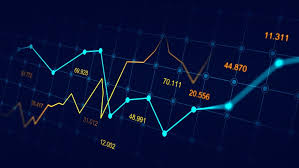
Mastering Currency Trading: A Comprehensive Guide to Forex
Currency trading, commonly known as Forex trading, has gained immense popularity over the last decade. With a daily trading volume exceeding $6 trillion, the foreign exchange (Forex) market is the largest financial market globally. As more people look to invest and trade currencies, understanding how Forex works is essential. In this article, we will delve into the fundamentals of currency trading, explore various strategies, and discuss important tools that can help traders succeed. Whether you are a beginner or a seasoned trader looking to enhance your skills, this guide will assist you in navigating the Forex landscape. Be sure to check out currency trading forex Forex Brokers in Kuwait for insights on local trading options.
What is Forex Trading?
Forex trading involves the buying and selling of currency pairs. Unlike traditional stock markets, Forex trades are conducted over-the-counter (OTC), meaning that transactions occur directly between parties without a centralized exchange. Currency pairs consist of a base currency and a quote currency. For instance, in the pair EUR/USD, the Euro is the base currency, while the US Dollar is the quote currency. Traders speculate on whether the base currency will strengthen or weaken against the quote currency.
How the Forex Market Works
The Forex market operates 24 hours a day, five days a week, allowing traders from all over the world to participate. It is segmented into major trading sessions: the Sydney session, the Tokyo session, the London session, and the New York session. Understanding these sessions is crucial for traders, as market volatility and liquidity vary throughout the day depending on which markets are open.
Prices in the Forex market are determined by the supply and demand for each currency. Economic indicators, geopolitical events, and central bank policies significantly influence these factors. As a result, Forex trading requires a good grasp of global economics and market sentiment.
Popular Currency Pairs
Some of the most traded currency pairs fall into three main categories: major, minor, and exotic pairs. Major pairs involve the most widely traded currencies, including the US Dollar, Euro, Japanese Yen, and British Pound. Minor pairs, on the other hand, do not include the US Dollar but often consist of major currencies. Exotic pairs involve a major currency and a currency from a developing or emerging economy and may come with wider spreads due to lower liquidity.
Here are some examples:
- Major Pairs: EUR/USD, USD/JPY, GBP/USD
- Minor Pairs: AUD/NZD, EUR/GBP
- Exotic Pairs: USD/SEK, EUR/TRY
Trading Strategies
Successful Forex trading requires the implementation of effective strategies. Here are a few popular approaches that traders often use:
- Day Trading: Day traders look to capitalize on short-term price movements and typically close all positions within the same trading day to avoid overnight risk.
- Swing Trading: Swing traders aim to capture price swings over several days or weeks. They take advantage of market momentum and trends.
- Scalping: This strategy involves making numerous small trades throughout the day to profit from tiny price movements. Scalpers require quick decision-making and strategy execution.
- Trend Following: Trend traders aim to identify and follow the overall market direction, whether upwards or downwards, and make trades accordingly.

Risk Management
Risk management is paramount in Forex trading as it can lead to substantial losses if not handled properly. Here are some essential risk management strategies:
- Setting Stop-Loss Orders: A stop-loss order is an instruction to close a position once the price reaches a certain level, minimizing potential losses.
- Position Sizing: This entails determining the amount of capital to risk on a single trade based on your overall portfolio size and risk tolerance.
- Diversifying Your Portfolio: By trading multiple currency pairs or asset classes, traders can reduce their exposure to a single market movement.
Technical and Fundamental Analysis
Traders often employ two main analytical approaches: technical and fundamental analysis.
Technical analysis involves analyzing price charts and patterns to predict future movements. Traders utilize various indicators like Moving Averages, Relative Strength Index (RSI), and Fibonacci retracement levels to inform their trading decisions.
Fundamental analysis focuses on economic data, news releases, and geopolitical events that could impact currency values. This approach may involve following interest rate changes, employment data, GDP growth, and other economic indicators.
Choosing a Forex Broker
Selecting a reliable Forex broker is critical to your trading success. A good broker should offer a user-friendly trading platform, competitive spreads, access to various currency pairs, and robust customer support. It’s also essential to ensure that the broker is regulated by a reputable authority. When choosing a broker in Kuwait, for instance, look for Forex Brokers in Kuwait who offer favorable trading conditions and local support.
The Importance of Practicing with a Demo Account
For beginners, utilizing a demo account is an invaluable tool. Many brokers offer demo accounts that allow you to practice trading with virtual money. This enables you to familiarize yourself with the trading platform, test your strategies, and gain confidence before committing real capital. It’s recommended to spend ample time on a demo account before transitioning to live trading.
Conclusion
Currency trading in the Forex market can be rewarding and challenging. By understanding the mechanisms of the Forex market, employing effective trading strategies, managing risks efficiently, and continually educating yourself, you can enhance your trading skills and increase your chances of success. Remember that Forex trading is not a get-rich-quick scheme; it heavily relies on in-depth knowledge, practice, and patience. Start your trading journey with determination and a commitment to continuous learning, and you may find success in the dynamic world of currency trading.
